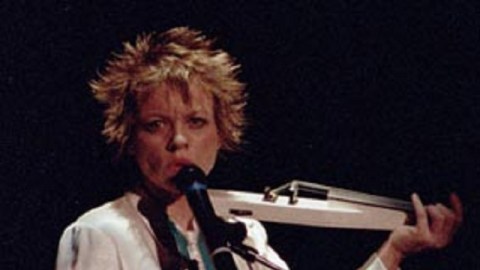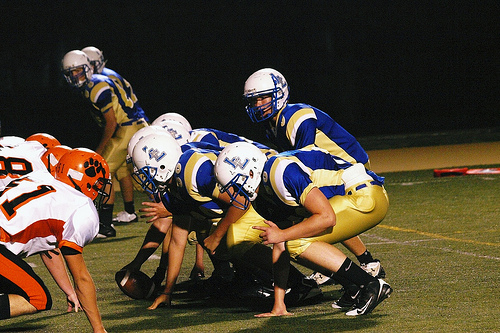Laurie Anderson’s Vision of Art in the Future

“The main thing that attracts me to Buddhism is probably what attracts every artist to being an artist—that it’s a godlike thing,” performance artist and musician Laurie Anderson says in an interview in the January 2012 issue of Believer magazine. In addition to that interesting take on the godhood of the creative artist, Anderson (shown above, in concert) sees a future in which “[w]e’ll be able to be in the present more effectively” and no longer need to make art or have museums, say five thousand years from now. Anderson, always a provocative and controversial artist in whatever medium, raises interesting questions for modern (and post-modern) artists. Will art still be made in the future? If so, what will it look like?
When art curator, novelist, and journalist Amanda Stern interviews Anderson, the results are quite interesting and wide ranging thanks to their prior personal relationship when Stern asked Anderson in 2006 to participate in a literary and music series in New York called “Happy Ending.” I doubt Anderson really filters her thoughts in any forum, but Stern’s questions really hit some fruitful buttons. The conversation swings from Anderson’s time with comedian/performance artist Andy Kauffman (she helped him with his pro wrestling schtick) to wrestling with deeper thoughts about faith and the art of the future. Read the whole thing when you have the time.
Building on the “godlike thing” that attracts her both to Buddha and to the artistic vocation, Anderson continues, “You are the ultimate authority. There is no other ultimate authority.” Unfortunately, however, some artists, according to Anderson, want to relinquish their divine authority to “the art police,” aka, the critics. “They want to have the critic who hands out tickets and says, ‘That’s too loose.’ They want to have that person—it’s very important. ‘Oh, I got a great review!’—they need to have that,” Anderson says. “One of the things that’s improved my life enormously in the last two years is that I haven’t read one single thing that’s been written about me, and that is fantastic!” Anderson refuses to listen to the bad or the good (include this, I presume). Like god or Buddha, Anderson just is what she is—an artist. And every artist, she says, should just “be,” too.
Anderson’s view of the future art continues and extends that state of being to all artists and viewers. The artist’s “godplex” belongs to everyone. “And that’s a frightening thought and a liberating thought, that you are the ultimate authority,” Anderson admits. “Every single person and bird and ant has that ultimate authority—so if you can find that and appreciate that, it’s a kind of a revolution.” Part of that revolution, which Anderson projects to five thousand years in the future, is a finding (or at least an abandonment of the search for) all the answers. When Stern brings up the “God Particle” and how it could unlock all the secrets of the universe, Anderson replies, “We can get rid of all those museums and stop doing those concerts! And be proud of it and hang out.” “[W]hat’s so great about the striving aspect of humans?” Anderson asks. “Maybe when we’re gods we’ll be more into just chilling, and we can just appreciate instead of looking for [answers].”
Anderson sees a shift away from art as eschatology to art as mindfulness in the Buddhist sense. “I think we’ll just be trying to appreciate things more,” Anderson says before musing on the development of “better ears” or improved eyesight to allow us “to be in the present more effectively.” Although she joked about closing museums and ending concerts, Anderson still feels that aesthetic objects will remain in the future, but they’ll teach us appreciation of form and beauty rather than human values, with the unsaid (by Anderson, but not by me) values of rabid nationalism, religious intolerance, and other forms of intolerance embedded into much of that art lurking in the background. “It’s just a Cageian idea of ‘Everything is here already,’” Anderson concludes. “Works of art are just ways to pay attention to different things, and to appreciate what is there, and more and more art is like that.” As much as any invocation of John Cage will make some cringe, Anderson’s use here hits the right, fittingly Buddhist note.
As much as I look to art for signs of civilization and meaning, I can’t help but be attracted to Anderson’s prediction, which offers rising hopes rather than the typical death-spiral of cultural doom. From Kenneth Clark’s Civilisation to every cathedral I’ve ever sat in, every cultural experience I’ve had has conditioned me to find meaning—usually a meaning that sets sides in opposition and conflict. The conflict-less art future Anderson proposes in which everyone gets their Zen on and appreciates what is before them rather than struggles for what (if anything) lies beyond seems like a kind of beauty we could (and should) all live with.





